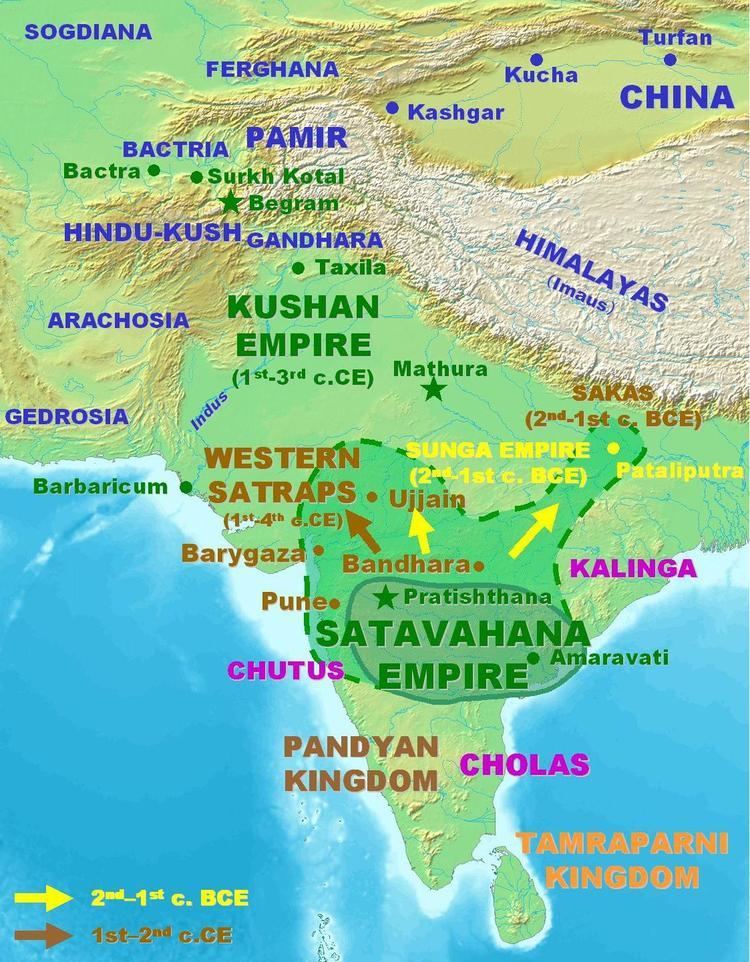Language spoken Marathi District Palghar | State Maharashtra | |
 | ||
Map of Sopara
Sopara (सोपारा) or Shurparaka (Sanskrit: शूर्पारक, Śūrpāraka) (by some identified with the Ophir mentioned in the Hebrew texts) was an ancient port town and the capital of the ancient Aparanta. The site of this ancient town is located near the present day Nala Sopara town in the Thane district, now in the newly created Palghar district, of the state Maharashtra, India.
Contents
Nala Sopara is one of the busiest western suburbs of Mumbai city. In ancient times, it was the largest township on India's west coast, trading with Mesopotamia, Egypt, Cochin, Arabia and Eastern Africa.
History
The Mahabharata and the Puranas state that the Śūrpāraka was reclaimed from the sea for the dwelling place of Parashurama and it became a tirtha for this reason. The finding of the relics in a stupa and the rock edicts (the fragments of the 8th and 9th major rock edicts) of Ashoka in 1882 prove the importance of this port town from the 3rd century BCE to the 9th century CE. The Buddhist text Mahavamsa (VI, 46,47) states that the first king of Sri Lanka, Vijaya sailed from Supparaka (Sopara) to Sri Lanka. Ptolemy mentioned this town as Soupara, and it was a major commercial centre during his time According to the Jaina writers, Shripala, a mythical king married Tilakasundari, daughter of king Mahasena of Soparaka. Jinaprabhasuri (14th century) in his Vividhatirthakalpa mentioned Soparaka as one of 84 Jaina tirthas (sacred places). He also mentioned about an image of Rishabhadeva located in this city till his time.
It has also been suggested that King Hiram of Tyre brought gold, precious stones and almug trees for Solomon from this city that was called land of Ophir.
Excavations at Sopara
In April 1882, Bhagvanlal Indraji, a noted archaeologist, numismatist and epigraphist excavated at the Burud Rajache Kot mound in Merdes village, near Sopara. The ruins of a Buddhist Stupa was found. From the center of the stupa (inside a brick built chamber) a large stone coffer was excavated which contained eight bronze images of Maitreya Buddha which belong to the c. 8th-9th century CE. This coffer also enclosed relic caskets of copper, silver, stone, crystal and gold, along with numerous gold flowers and fragments of a begging bowl. A silver coin of Gautamiputra Satakarni (Satvahans) was also found from the mound. The Bombay Provincial Government presented the Sopara relics to the Asiatic Society of Bombay. The coins and the artifacts found during the excavations at the site of this ancient town can still be viewed in the Asiatic Society, Mumbai museum. In an old Muslim graveyard near Ramkund, the fragments of 7th and 9th major rock edicts were found. These rock edicts can be viewed in the Chhatrapati Shivaji Maharaj Vastu Sangrahalaya, Mumbai. In 1956, a fragment of 11th major rock edict was found from a coastal village, Bhuigaon. During an excavation in 1993, a ring well, fragments of Roman amphorae red polished ware and glass (all belong to the early centuries of the Common Era) were found.
Education
There are number of small and big schools in Sopara. Some of the major schools are St.Augustine's High school, St.Mary's English high school, Sacred heart high school, St.Francis, KMPD, St.aloysius, Z.B. Zakeria High School.a.k.I Urdu high school.
